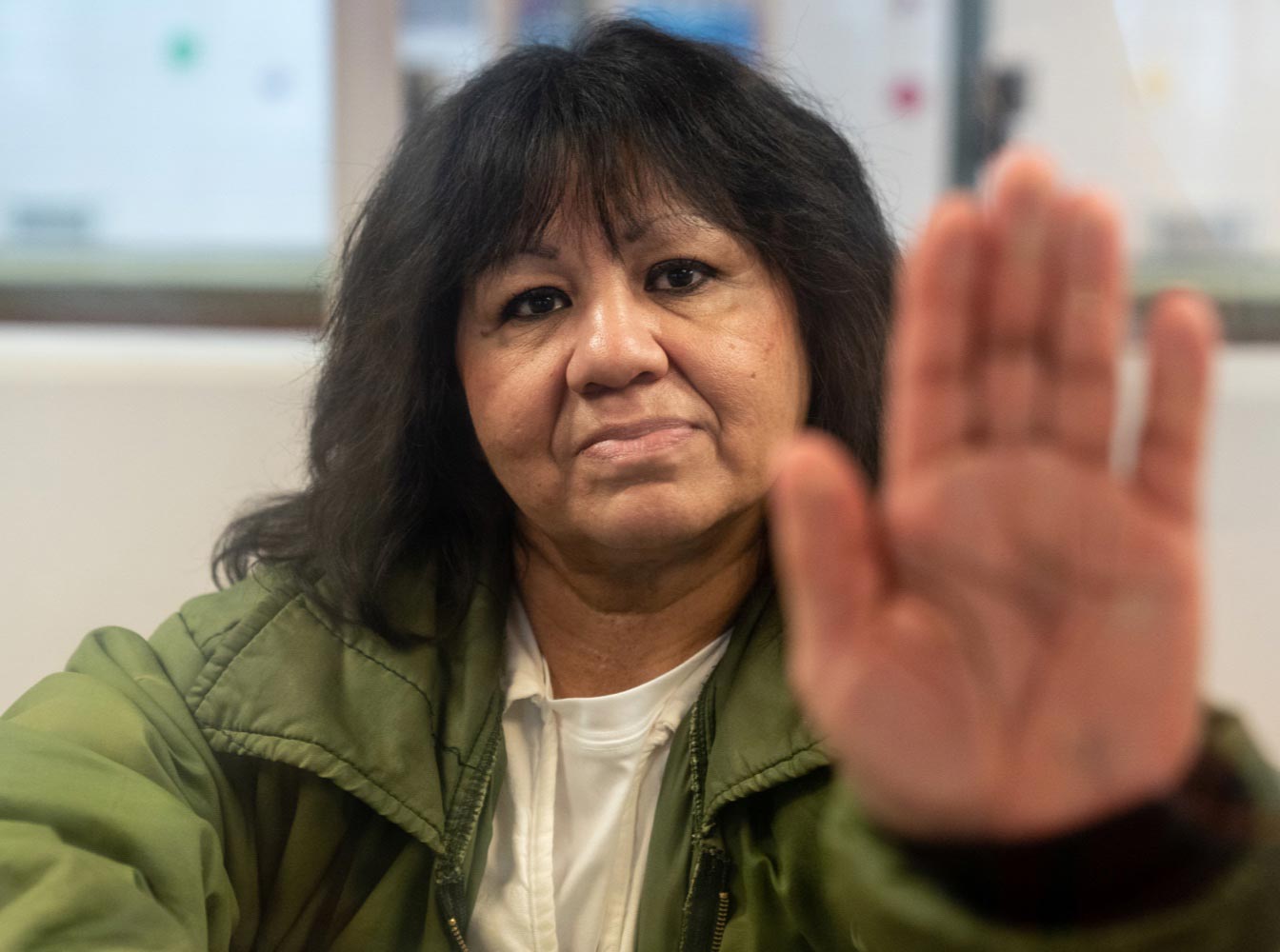Melissa Lucio

Melissa Lucio poses for a portrait behind glass at the Mountain View Unit in Gatesville, Texas. (Image: Ilana Panich-Linsman for The Innocence Project)
After 17 years on death row, new findings affirm Melissa Lucio’s innocence.
Melissa Lucio was wrongly convicted and sentenced to death for the accidental death of her daughter, Mariah, who died two days after a fall down a flight of stairs. Ms. Lucio has spent nearly two decades on Texas’ death row for a crime that never happened.
Just two days before her scheduled execution in April 2022, the Texas Court of Criminal Appeals (CCA) issued a stay and ordered the 138th Judicial District Court of Cameron County to review new evidence pointing to her innocence.
In April 2024, the judge who presided over Ms. Lucio’s original trial — Judge Arturo Nelson — found that the former prosecution team illegally suppressed critical evidence showing that Mariah’s injuries were consistent with an accidental fall, not abuse. Judge Nelson ruled that the suppression of this evidence at Ms. Lucio’s trial violated her constitutional rights under Brady v. Maryland and recommended that her conviction be overturned. Cameron County District Attorney Luis Saenz agreed, affirming that Ms. Lucio’s rights were violated and that her conviction should not stand.
Then, in October 2024, after further review of Ms. Lucio’s remaining claims, Judge Nelson went a step further: he found that Melissa Lucio is actually innocent and that she did not kill her daughter, and recommended that both her conviction and death sentence be vacated. The case is now pending at the Texas Court of Criminal Appeals, which will decide whether to adopt these findings and finally overturn her wrongful conviction.

Melissa Lucio poses for a portrait behind glass at the Mountain View Unit in Gatesville, Texas. (Image: Ilana Panich-Linsman for The Innocence Project)
Currently on Death Row:
Yes
Time Served:
17 years
State: Texas
Charge: Capital murder
Conviction: Capital murder
Sentence: Death
Incident Date: 02/17/2007
Conviction Date: 08/12/2008
Accused Pleaded Guilty: No
Case Year: 2007
Contributing Causes of Conviction: False Confessions or Admissions, Government Misconduct, Unvalidated or Improper Forensic Science
Death Penalty Case: Yes

Reps. Jeff Leach, Joe Moody, Lacey Hull, Victoria Criado, Rafael Anchia, Toni Rose, and James White prayed with Melissa Lucio at Mountain View Unit in Gatesville, Texas, where the state houses women on death row. (Image: Courtesy of Rep. Jeff Leach)
Key Facts to Know About Melissa Lucios
-
The judge who presided over Melissa Lucio’s trial finds she is “actually innocent.”
-
Ms. Lucio’s statements to police have all the hallmarks of a false confession.
-
Ms. Lucio’s lifetime of sexual abuse and domestic violence made her especially vulnerable to coercive interrogation tactics.
-
The jury was presented with unscientific testimony asserting Ms. Lucio’s guilt.
-
Gender bias shaped Ms. Lucio’s investigation and prosecution.
-
Ms. Lucio is driven by her faith and commitment to her family.
-
There is broad support across Texas for Ms. Lucio.

Press and Key Court Decisions
Judge Nelson's Findings of Fact and Conclusions of Law (FFCL)
Texas state district judge for the 138th District Court 10.14.24
Editorial: Death Row Inmate Melissa Lucio Should Be Free
Houston Chronicle 04.18.24
Trial Court Recommends Melissa Lucio’s Conviction and Death Sentence Be Overturned
Innocence Project 11.14.24
Texas judge says death row inmate is innocent in daughter’s death
Washington Post 11.15.24
Finally! Thank goodness a court stopped death penalty in case of Texas mom Melissa Lucio
Fort Worth Star-Telegram Logo
